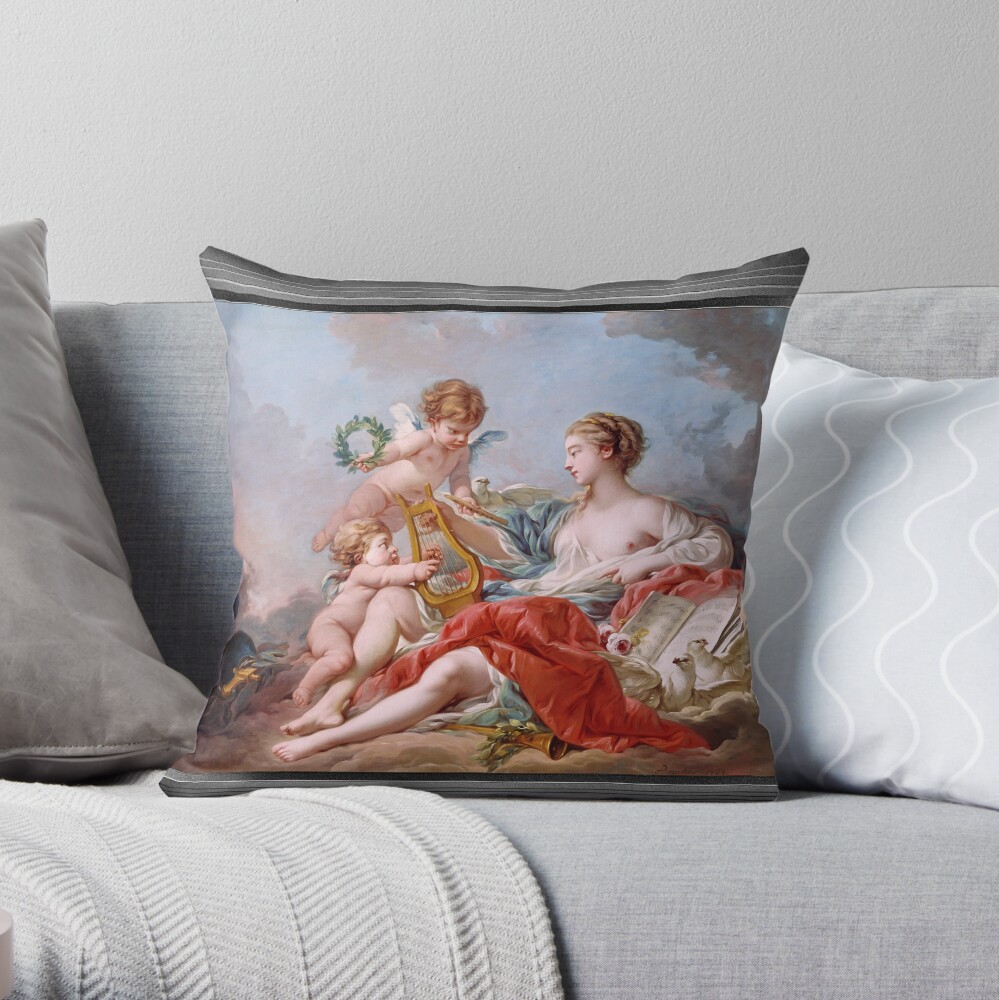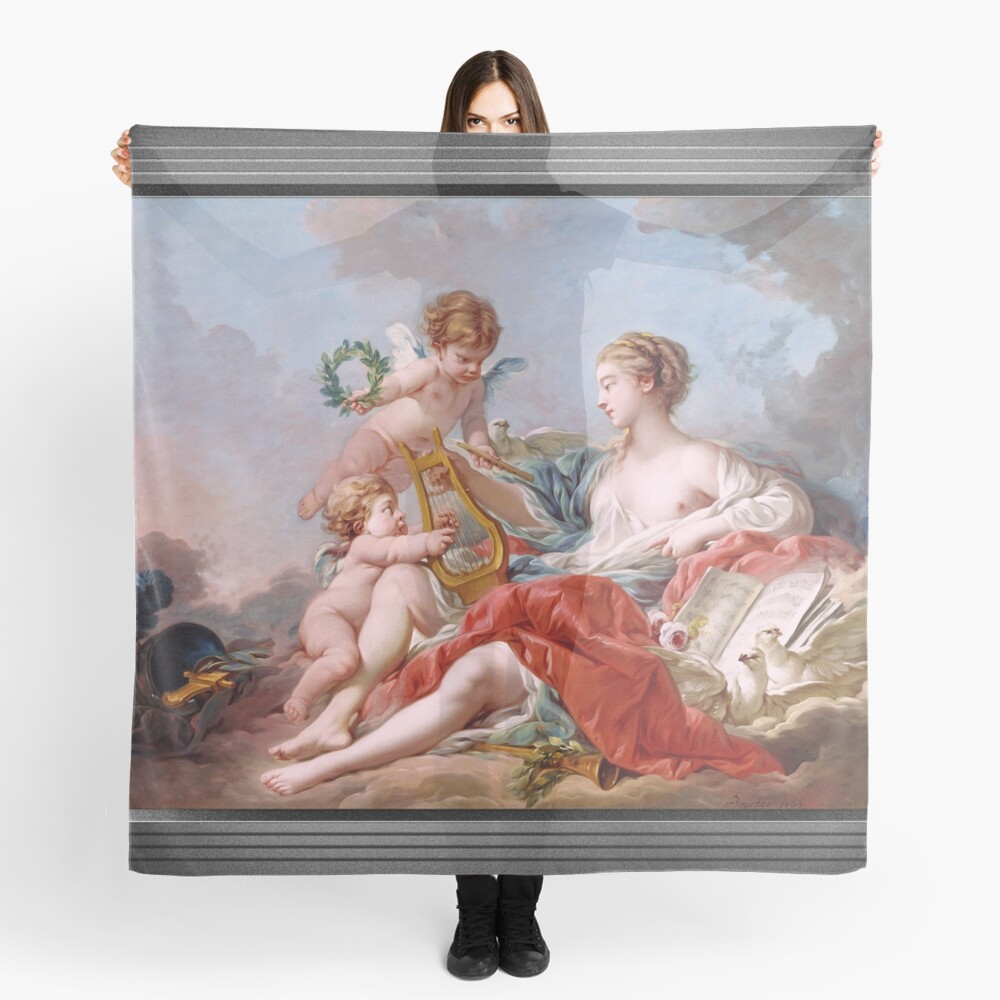
Allégorie de la Musique
Allégorie de la Musique (Allegory of Music) c1764 by French Painter François Boucher (1703 – 1770); also known as a draftsman, engraver and decorator in the French Rococo style, that was well known for his lavish mythological, allegorical and erotic motifs and was the court painter of Louis XV and a favorite of the Marquise de Pompadour.

This free flowing Rococo style painting by Boucher interprets the meaning of music by showing an attractive young female figure wrapped in layers of garment revealing her bare left shoulder and breast, as her left forearm rest on red cloth that is laid over clouds that are supporting her in the heavens.
She is holding in her extended right hand a gold lyre that is being played by winged putti that is leaning against her right leg, with another putti fly above them holding a laurel wreath in its right hand and a flute in its extended left hand.
By the floating putti and positioned by the upper arm of the young lady is a white dove, which makes up a set of three, with the other two situated at the base of some open sheet music and pink roses, that are position just below her left forearm.
Below her is a horn slightly covered with more laurel leaves; and behind the putti that is playing the layer is a blue helmet with a gold grown and blue top feather beside a cloth wrapped sword with a gold handle.

Allégorie de la Musique is a remastered digital art old masters reproduction of a public domain image that is available as a canvas print online.
Info Below Derived From Wikipedia.org
A native of Paris, Boucher was the son of a lesser known painter Nicolas Boucher, who gave him his first artistic training. At the age of seventeen, a painting by Boucher was admired by the painter François Lemoyne. Lemoyne later appointed Boucher as his apprentice, but after only three months, he went to work for the engraver Jean-François Cars.
In 1720, he won the elite Grand Prix de Rome for painting, but did not take up the consequential opportunity to study in Italy until five years later, due to financial problems at the Académie royale de peinture et de sculpture.[1] On his return from studying in Italy he was admitted to the refounded Académie de peinture et de sculpture on 24 November 1731. His morceau de réception (reception piece) was his Rinaldo and Armida of 1734.

Boucher married Marie-Jeanne Buzeau in 1733. The couple had three children together. Boucher became a faculty member in 1734 and his career accelerated from this point as he was promoted Professor then Rector of the Academy, becoming inspector at the Royal Gobelins Manufactory and finally Premier Peintre du Roi (First Painter of the King) in 1765. Portrait of Marie-Louise O’Murphy c. 1752
Boucher died on 30 May 1770 in his native Paris. His name, along with that of his patron Madame de Pompadour, had become synonymous with the French Rococo style, leading the Goncourt brothers to write: “Boucher is one of those men who represent the taste of a century, who express, personify and embody it.”
Boucher is famous for saying that nature is “trop verte et mal éclairée” (too green and badly lit).
Boucher was associated with the gemstone engraver Jacques Guay, whom he taught to draw. He also mentored the Moravian-Austrian painter Martin Ferdinand Quadal as well as the neoclassical painter Jacques-Louis David in 1767.[4] Later, Boucher made a series of drawings of works by Guay which Madame de Pompadour then engraved and distributed as a handsomely bound volume to favored courtiers



